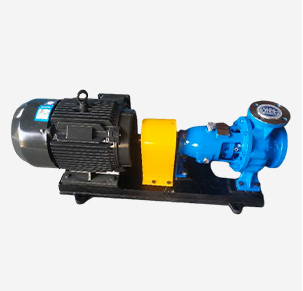Punjabi
- Afrikaans
- Albanian
- Amharic
- Arabic
- Armenian
- Azerbaijani
- Basque
- Belarusian
- Bengali
- Bosnian
- Bulgarian
- Catalan
- Cebuano
- Corsican
- Croatian
- Czech
- Danish
- Dutch
- English
- Esperanto
- Estonian
- Finnish
- French
- Frisian
- Galician
- Georgian
- German
- Greek
- Gujarati
- Haitian Creole
- hausa
- hawaiian
- Hebrew
- Hindi
- Miao
- Hungarian
- Icelandic
- igbo
- Indonesian
- irish
- Italian
- Japanese
- Javanese
- Kannada
- kazakh
- Khmer
- Rwandese
- Korean
- Kurdish
- Kyrgyz
- Lao
- Latin
- Latvian
- Lithuanian
- Luxembourgish
- Macedonian
- Malgashi
- Malay
- Malayalam
- Maltese
- Maori
- Marathi
- Mongolian
- Myanmar
- Nepali
- Norwegian
- Norwegian
- Occitan
- Pashto
- Persian
- Polish
- Portuguese
- Punjabi
- Romanian
- Russian
- Samoan
- Scottish Gaelic
- Serbian
- Sesotho
- Shona
- Sindhi
- Sinhala
- Slovak
- Slovenian
- Somali
- Spanish
- Sundanese
- Swahili
- Swedish
- Tagalog
- Tajik
- Tamil
- Tatar
- Telugu
- Thai
- Turkish
- Turkmen
- Ukrainian
- Urdu
- Uighur
- Uzbek
- Vietnamese
- Welsh
- Bantu
- Yiddish
- Yoruba
- Zulu
Telephone: +86 13120555503
Email: frank@cypump.com
ਅਕਤੂਃ . 16, 2024 01:39 Back to list
Designing Slurry Pump Impellers for Enhanced Efficiency and Performance in Harsh Conditions
Designing Slurry Pump Impellers for Optimal Performance
Slurry pumps are vital components in various industrial processes, particularly in mining, mineral processing, and slurry transportation. Due to their role in handling abrasive solids suspended in a liquid, the design of slurry pump impellers is crucial for ensuring efficient operation, maximizing uptime, and minimizing maintenance costs. Engineers and designers must consider several key factors to achieve optimal performance while also addressing the challenges posed by the unique properties of slurries.
Understanding Slurry Mechanics
Before delving into impeller design, it is essential to understand the characteristics of slurries. Slurries are mixtures of solids and liquids, where the solid phase significantly influences the flow behavior. The particle size, concentration, and density can affect the viscosity of the slurry, leading to challenges such as increased wear and altered flow dynamics. Designing an impeller that can efficiently handle these varying conditions requires a meticulous approach.
Impeller Material Selection
One of the primary considerations in slurry pump design is the selection of appropriate materials for the impeller. Given the abrasive nature of slurries, materials must have high wear resistance while also maintaining adequate strength and corrosion resistance. Common materials include high-chrome iron, rubber-lined components, and composite materials. The choice of material will depend on the specific properties of the slurry being pumped, including pH levels, temperature, and the types of solids present.
Impeller Geometry
The geometry of the impeller plays a critical role in ensuring effective hydraulic performance. Key design parameters include the impeller diameter, number of vanes, vane angle, and inlet configuration. A well-designed impeller should create an optimal flow path for the slurry, minimizing turbulence and ensuring smooth transitions. Increasing the number of vanes can enhance the pump’s efficiency by improving the distribution of flow and reducing the risk of cavitation, but at the same time, it can increase wear rates due to the greater surface area exposed to abrasive particles.
'designing slurry pump impellers for optimal ...'

Hydraulic Design Principles
When designing impellers for slurry pumps, hydraulic principles must be thoroughly integrated into the design. The pump's capacity, head, and efficiency are directly related to the design of the impeller. Engineers often use computational fluid dynamics (CFD) simulations to optimize their designs. These simulations allow designers to analyze fluid behavior and predict how modifications to the impeller shape will affect performance, enabling them to fine-tune the design before physical prototypes are produced.
Wear and Maintenance Considerations
Given the harsh operating conditions associated with slurry handling, wear is a major concern. Effective impeller design must account for wear patterns and ensure that the impeller can maintain performance over its operational life. Implementing design features such as sacrificial edges or wearing strips can help extend the lifespan of the impeller. Additionally, regular maintenance and inspections are necessary to identify wear early on and replace components before catastrophic failure occurs.
Testing and Validation
Once the design is finalized and prototypes are created, rigorous testing is necessary to validate the impeller's performance. Bench tests and field trials can provide insights into efficiency, durability, and overall performance under real operating conditions. Feedback from these tests can lead to further design enhancements and refinements, ensuring that the final product meets or exceeds industry performance standards.
Conclusion
The design of slurry pump impellers is a complex intersection of materials science, fluid dynamics, and mechanical engineering. By focusing on optimizing impeller geometry, selecting appropriate materials, and applying sound hydraulic principles, engineers can develop highly efficient slurry pumps that withstand the challenges of harsh operating environments. Continuous innovation and testing are paramount to addressing the dynamic nature of slurry behavior, ensuring that these critical components contribute to the overall efficiency and reliability of industrial processes. As industries evolve, the importance of effective slurry pump impeller design will only continue to grow.
-
High-Efficiency Axial Flow Pump for Water Transfer & Irrigation
NewsJul.23,2025
-
High-Efficiency Horizontal Split Case Pump for Industrial Use
NewsJul.22,2025
-
Reliable Septic Tank Pumps | Durable & Clog-Resistant
NewsJul.22,2025
-
Here is the optimized TDK set for "axial flow pump": ``` Axial Flow Pump: High-Efficiency & Reliable Water Transfer Solutions
NewsJul.21,2025
-
DT Desulphurization FGD Pumps - Corrosion-Resistant & High-Efficiency
NewsJul.21,2025
-
High-Efficiency Submersible Effluent Pump for Sewage & Wastewater Solutions
NewsJul.08,2025










